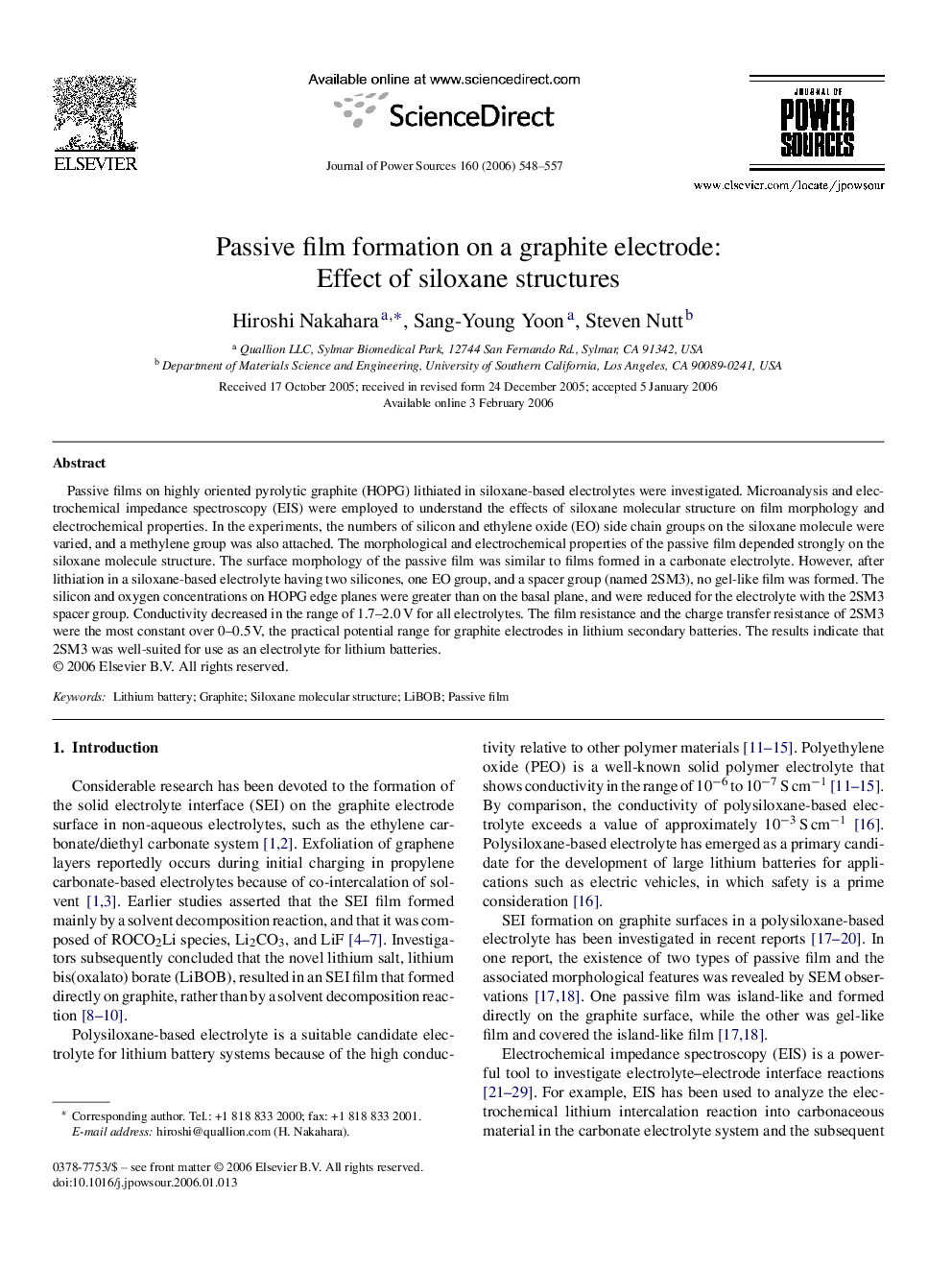| Article ID | Journal | Published Year | Pages | File Type |
|---|---|---|---|---|
| 1292291 | Journal of Power Sources | 2006 | 10 Pages |
Passive films on highly oriented pyrolytic graphite (HOPG) lithiated in siloxane-based electrolytes were investigated. Microanalysis and electrochemical impedance spectroscopy (EIS) were employed to understand the effects of siloxane molecular structure on film morphology and electrochemical properties. In the experiments, the numbers of silicon and ethylene oxide (EO) side chain groups on the siloxane molecule were varied, and a methylene group was also attached. The morphological and electrochemical properties of the passive film depended strongly on the siloxane molecule structure. The surface morphology of the passive film was similar to films formed in a carbonate electrolyte. However, after lithiation in a siloxane-based electrolyte having two silicones, one EO group, and a spacer group (named 2SM3), no gel-like film was formed. The silicon and oxygen concentrations on HOPG edge planes were greater than on the basal plane, and were reduced for the electrolyte with the 2SM3 spacer group. Conductivity decreased in the range of 1.7–2.0 V for all electrolytes. The film resistance and the charge transfer resistance of 2SM3 were the most constant over 0–0.5 V, the practical potential range for graphite electrodes in lithium secondary batteries. The results indicate that 2SM3 was well-suited for use as an electrolyte for lithium batteries.
